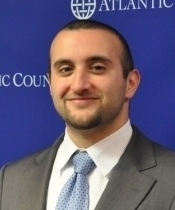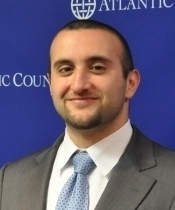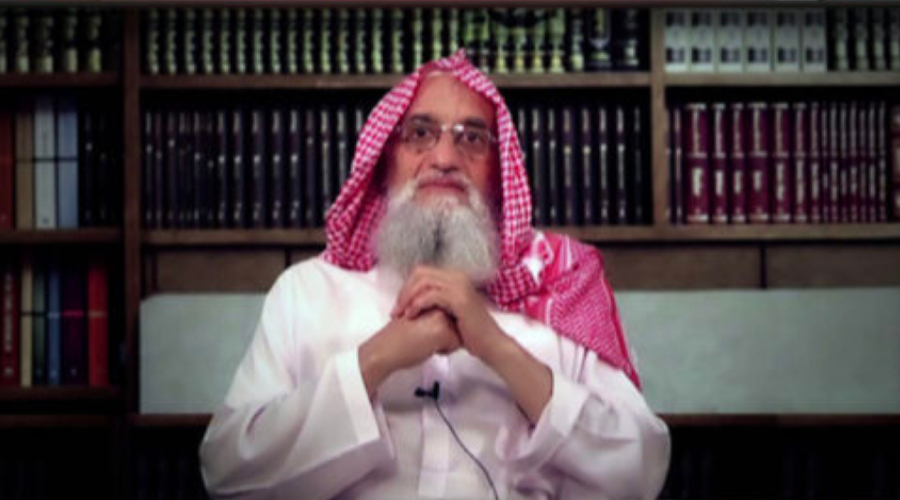The Limits of Islamic State Expansion
Editor’s Note: The Islamic State’s latest victories in Iraq have been met by teeth-gnashing in Iraq and hand-wringing in Washington. U.S. military officials expressed disgust and disappointment with the Iraqi army, and President Obama’s critics and advocates of greater intervention in Syria have blasted the administration for a failed policy in the Middle East in general and against the Islamic State in particular.

Published by The Lawfare Institute
in Cooperation With

Editor’s Note: The Islamic State’s latest victories in Iraq have been met by teeth-gnashing in Iraq and hand-wringing in Washington. U.S. military officials expressed disgust and disappointment with the Iraqi army, and President Obama’s critics and advocates of greater intervention in Syria have blasted the administration for a failed policy in the Middle East in general and against the Islamic State in particular. Faysal Itani of the Atlantic Council, however, argues that these concerns are overstated: The Islamic State faces natural limits to its expansion, and while imminent defeat is not in the cards, the group will be hard pressed to sustain its expansionist project over the long term.
***
Shortly after losing Tikrit to Iraqi security forces and militia, the Islamic State seized Ramadi, the capital of Iraq’s Anbar province, and captured the ancient city of Palmyra in central Syria just a few days later. These victories indicate that the Islamic State remains an adaptive and creative organization, able to absorb losses in manpower, resources, and territory only to exploit its enemies’ weaknesses elsewhere. It is unclear whether the current U.S. strategy of conducting air strikes and supporting the Iraqi armed forces will “degrade and ultimately defeat” the Islamic State or, if it does, how long that would take. General David Petraeus described Ramadi as “a strategic loss” and the narrative that the Islamic State was on the defensive as “hollow.”
But this focus on the U.S. strategy misses a critical point: the key obstacles to the Islamic State’s expansionary ambitions are not the U.S. air campaign or its efforts to train and equip Iraqi or Syrian allies; rather, the local demographic, geographic, and military realities of Iraq and Syria stand in the group’s way, placing natural limits on how much it is likely to expand.
The key obstacles to the Islamic State’s expansionary ambitions are not the U.S. air campaign or its efforts to train and equip Iraqi or Syrian allies; rather, the local demographic, geographic, and military realities of Iraq and Syria stand in the group’s way, placing natural limits on how much it is likely to expand.
Some of these obstacles are already on display in Iraq, despite the weakness of Iraq’s armed forces and other setbacks. Most visibly, although the Islamic State effectively dominates the Sunni Arab landscape, its ability to mobilize fighters and resources—though impressive—cannot match that of the numerically superior Iraqi Shi’a and their major foreign patron, Iran. In fact, there are twice as many Shi’a as there are Sunni Arabs in Iraq. Ironically, the weakness of the Iraqi government and army in the face of the Islamic State created the space and the need for popular militias, known as Popular Mobilization Units (PMU). The PMU, backed by and answering to the Iraqi government, have been joined by well-trained and experienced Iranian-backed militias.
Together, the PMU and Iranian-backed militias have inflicted serious damage on Islamic State forces. These militias are endorsed by a key religious authority, Grand Ayatollah Ali Sistani, and can tap into the Iraqi Shi’a’s far larger recruitment base as compared to the Islamic State. Of course, the militias’ sectarian nature and hostility toward the Sunni Arab population will only feed the Sunni disenfranchisement that empowers the Islamic State: an Iraq dominated by Shi’ite sectarian militias and their Iranian patrons will probably be neither inclusive nor stable, but it will likely be one in which the Islamic State will largely be contained to Sunni Arab territories that may or may not include major cities like Ramadi and Mosul. Relatively coherent and capable Kurdish forces also present an obstacle to the Islamic State’s expansion. Simply put, the Islamic State cannot marshal the resources to overwhelm its Kurdish and Shi’ite Arab opponents, though it will doubtless retain a terrorist and asymmetric capability and control significant parts of Iraq’s Sunni-populated areas.
Simply put, the Islamic State cannot marshal the resources to overwhelm its Kurdish and Shi’ite Arab opponents, though it will doubtless retain a terrorist and asymmetric capability and control significant parts of Iraq’s Sunni-populated areas.
The political and military landscape in Syria is more complex still, and arguably more hostile to the Islamic State despite its solid foundation there. While much of the Sunni community in Iraq has been subjugated by the Islamic State and its political leadership has been discredited or devastated, Sunni Arabs in Syria are led and controlled by a broad spectrum of actors hostile to the Islamic State. In theory, the regime is also hostile to the Islamic State, but it appears unable to retain control over its own territories against, much less existentially threaten, the group (indeed, the Islamic State’s recent major victories in Syria have been against the regime).
Rather, the main obstacle to the group’s expansion in Syria is the range of insurgent groups deriving their support and recruits from the Sunni Arab and Kurdish populations, almost all of whom are hostile to the Islamic State. It is these numerous brigades and coalitions, including the Syrian Revolutionaries Front, Islamic Front, Southern Front, and the Kurdish YPG, that inflicted the most significant defeats on the Islamic State and frequently blocked its efforts to expand beyond the sparsely populated provinces of Raqqa and Deir al-Zour. To the extent that these insurgent groups consolidate and further their gains against the regime, their ability to resist and eventually roll back the Islamic State will increase. In the meantime, however, the Islamic State will probably make some gains until either the regime or insurgents are removed from the military equation.
Admittedly, the Islamic State could survive as a self-styled “caliphate,” controlling a certain amount of contiguous territory and minimal population and resources. The group has skillfully exploited these resources and its rivals’ vulnerabilities, evading, outflanking, and attacking them using the open deserts of eastern Syria and western Iraq. The Islamic State as a terrorist and insurgent group will endure, but the Islamic State as an expansionary power and state-building project faces formidable and probably insurmountable obstacles: its enemies are too powerful in Iraq, and too numerous in Syria.
***
Faysal Itani is a Resident Fellow with the Atlantic Council's Rafik Hariri Center for the Middle East. His work focuses on the Levant including Syria, Lebanon, Iraq, and Jordan.





